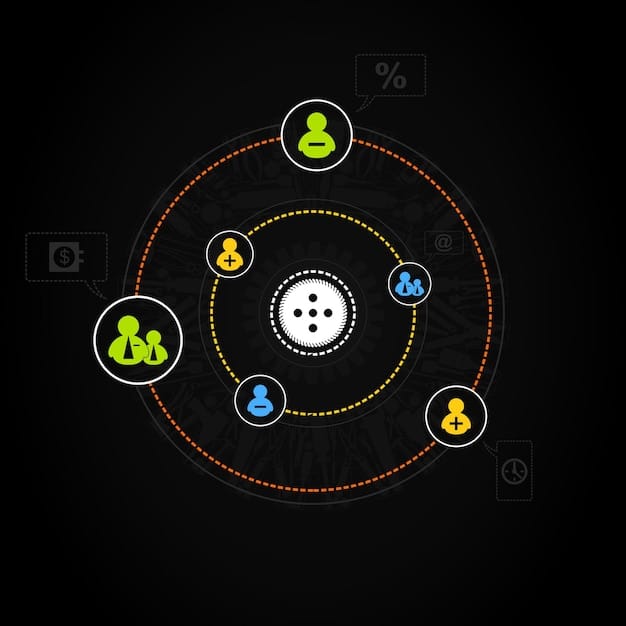Cybersecurity Guide: Using Threat Intelligence to Prevent Cyber Attacks

Threat intelligence provides organizations with actionable insights derived from data analysis to proactively identify, understand, and mitigate potential cybersecurity threats, enabling them to stay ahead of cyber attacks.
In today’s digital landscape, cybersecurity threats are constantly evolving and becoming more sophisticated. To effectively protect your organization, a reactive approach is no longer sufficient. Embracing threat intelligence is crucial to proactively identify, understand, and mitigate potential cyber attacks before they cause significant damage.
What is Threat Intelligence?
Threat intelligence is more than just collecting data. It involves gathering, analyzing, and disseminating information about potential or current attacks that could harm an organization. This intelligence is used to make informed decisions and take proactive measures to prevent or mitigate the impact of cyber threats.
Essentially, threat intelligence transforms raw data into actionable insights. This helps security teams understand the motives, targets, and attack behaviors of cybercriminals, allowing them to anticipate and respond to threats more effectively.

The Threat Intelligence Lifecycle
Understanding the threat intelligence lifecycle is essential for implementing an effective strategy:
- Collection: Gathering data from various sources, including open-source intelligence (OSINT), social media, dark web forums, and internal network logs.
- Processing: Cleaning, filtering, and organizing the collected data to remove irrelevant or duplicate information.
- Analysis: Analyzing the processed data to identify patterns, trends, and indicators of compromise (IOCs). This may involve using threat intelligence platforms (TIPs) and other analytical tools.
- Dissemination: Sharing the analyzed intelligence with relevant stakeholders, such as security teams, incident responders, and executive management, in a timely and actionable format.
The lifecycle is a continuous loop, emphasizing the need for ongoing monitoring and adaptation to emerging threats.
In summary, threat intelligence provides actionable insights to enhance an organization’s security posture. It empowers security teams to make data-driven decisions and proactively defend against cyber threats.
Why is Threat Intelligence Important?
In today’s complex threat environment, threat intelligence is critical for informed decision-making. It provides key insights that enables a significant improvement in your business’s overall security posture. This allows organizations to stay one step ahead of potential attackers.
By understanding the attacker’s tactics, techniques, and procedures (TTPs), organizations can tailor their security defenses and prioritize resources more effectively. Investing in threat intelligence shows a clear movement towards proactive security.
Benefits of Threat Intelligence
Some of the most significant benefits of threat intelligence include:
- Proactive Security: Enables organizations to anticipate and prevent cyber attacks before they occur, minimizing potential damage.
- Improved Incident Response: Provides context and insights to accelerate incident response efforts and reduce the impact of security breaches.
- Enhanced Vulnerability Management: Helps identify and prioritize vulnerabilities based on real-world threat activity, improving patching efficiency.
- Better Resource Allocation: Allows organizations to focus their security resources on the most relevant and critical threats, optimizing their security investments.
Ultimately, threat intelligence helps organizations improve their overall security posture and reduce their risk of falling victim to cyber attacks. It shifts the focus from reactive to proactive security measures.

Types of Threat Intelligence
Not all threat intelligence is created equal. There are different types of threat intelligence, each serving a specific purpose and providing a unique level of detail.
The type of intelligence you use will depend on your organization’s size, industry, and specific security needs. Understanding these distinctions enables teams to better match threat information to existing security frameworks and operational demands.
Strategic, Tactical, and Operational Intelligence
Threat intelligence can be broadly categorized into three main types:
- Strategic Intelligence: High-level information about emerging threats, trends, and geopolitical factors that could impact the organization. This type of intelligence is typically consumed by executive management and helps inform strategic security decisions.
- Tactical Intelligence: Technical information about attacker TTPs, malware signatures, and other indicators of compromise (IOCs). This type of intelligence is used by security teams to improve their defenses and detect and respond to attacks.
- Operational Intelligence: Real-time information about specific attacks that are currently targeting the organization. This type of intelligence is used by incident responders to investigate and contain security breaches.
Each type of intelligence provides value at different levels of the organization. By leveraging all three, organizations can achieve a comprehensive understanding of their threat landscape.
Sources of Threat Intelligence
Threat intelligence can be sourced from a variety of places, ranging from open-source resources to commercial providers.
The optimal mix of sources will depend on your organization’s budget, resource constraints, and specific intelligence requirements. Knowing where to find good information can be as important as understanding the information itself.
Internal and External Sources
Common sources of threat intelligence include:
- Open-Source Intelligence (OSINT): Freely available information from sources such as news articles, blogs, social media, and security research reports.
- Commercial Threat Intelligence Feeds: Subscription-based services that provide access to curated and analyzed threat data, often including IOCs and TTPs.
- Information Sharing and Analysis Centers (ISACs): Industry-specific organizations that facilitate the sharing of threat intelligence among members.
- Vulnerability Databases: Publicly available databases that contain information about known software vulnerabilities.
In addition to external sources, organizations can also leverage internal data, such as network logs, security alerts, and incident reports, to generate their own threat intelligence.
How to Implement Threat Intelligence
Implementing threat intelligence requires a well-defined strategy and a combination of people, processes, and technology. Start by deciding what your specific goals are. For example, preventing ransomware or defending against data breaches.
The following steps are generally advised to build an effective threat intelligence program. Proper technology implementation is also key here, as threat intelligence platforms help to collect and analyze data efficiently.
Steps for Implementation
Some key considerations for implementing threat intelligence include:
- Define Your Goals and Requirements: Clearly define what you want to achieve with threat intelligence and what kind of information you need to support your security operations.
- Identify Your Sources: Determine which sources of threat intelligence are most relevant to your organization and establish a process for collecting and processing data from those sources. The sources should also integrate well with other cybersecurity measures.
- Select Your Tools: Choose a threat intelligence platform (TIP) or other tools that can help you analyze and manage threat data.
- Train Your Staff: Ensure that your security team has the skills and knowledge necessary to effectively use threat intelligence.
Finally, it is essential to continuously monitor and evaluate the effectiveness of your threat intelligence program to ensure that it is meeting your organization’s needs.
Best Practices for Threat Intelligence
To get the most out of your threat intelligence program, it’s important to follow some key best practices. As this is an ongoing process, it is best to regularly audit your practices to ensure that your data is relevant and accurate.
A strong focus should also be placed on fostering a collaborative environment. It is important to ensure that all members of the team are working together to gather, analyze, and disseminate threat intelligence.
Key Best Practices
Some of the key best practices for threat intelligence include:
- Focus on Actionable Intelligence: Prioritize intelligence that can be used to directly improve your security defenses and inform decision-making.
- Automate Data Collection and Analysis: Use tools and technologies to automate the process of collecting, processing, and analyzing threat data.
- Regularly Review and Update Your Intelligence: Threat intelligence is constantly evolving, so it’s important to regularly review and update your intelligence to ensure that it remains relevant and accurate.
- Share Intelligence with Trusted Partners: Collaborate with other organizations in your industry or region to share threat intelligence and improve collective defense.
By implementing these best practices, organizations can maximize the value of their threat intelligence programs and improve their ability to prevent and respond to cyber attacks.
| Key Point | Brief Description |
|---|---|
| 🛡️ Proactive Defense | Uses data to anticipate and prevent cyber attacks before they occur. |
| 🔍 Intelligence Types | Includes strategic, tactical, and operational intelligence tailored to different needs. |
| 📊 Data Sources | Gathers info from OSINT, commercial feeds, ISACs, internal logs, and vulnerability databases. |
| ⚙️ Implementation | Involves defining goals, selecting sources, choosing tools, training staff, and continuous monitoring. |
Frequently Asked Questions (FAQ)
▼
Threat intelligence enables proactive security, enhances vulnerability management, improves incident response, and optimizes resource allocation. This leads to better-informed decisions and a stronger security posture.
▼
Threat intelligence sources include open-source intelligence (OSINT), commercial threat intelligence feeds, information sharing and analysis centers (ISACs), vulnerability databases, and internal security data.
▼
Threat intelligence provides valuable context about ongoing attacks, enabling incident responders to quickly identify the scope, impact, and potential remediation steps, thereby accelerating the response process.
▼
The threat intelligence lifecycle encompasses collection, processing, analysis, and dissemination. This continuous process aids in the generation, refinement, and distribution of threat information to stakeholders.
▼
Key best practices include focusing on actionable intelligence, automating data collection and analysis, regularly reviewing and updating intelligence, and sharing intelligence with trusted partners, ensuring continuous improvement.
Conclusion
In conclusion, threat intelligence is a critical component of a robust cybersecurity strategy. By leveraging data and insights to proactively identify and mitigate threats, organizations can significantly improve their security posture and stay ahead of cyber attacks. Embracing threat intelligence requires a well-defined strategy, the right tools, and a commitment to continuous learning and adaptation.





